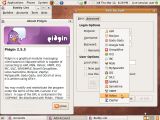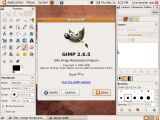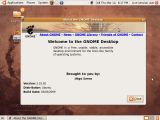
Linux’s history can be measured in both releases 2.0, 2.6, and so on, and in its major distributions, which brought these releases to the masses at large. Here’s my list of the top five major Linux distributions that had the most impact in the operating system’s brief history.
You can measure Linux’s history in many ways. We usually think of it in terms of releases. The Linux kernel got its start in September 1991 with version 0.01. The kernel turned 18 this fall with the release of 2.6.something-or-other. But, another way of looking at Linux is in terms of its important distributions.
For users, these distributions have been the mountain tops. Each of the truly significant distributions changed how Linux was seen, and brought the operating system new and different groups of users. You can argue about which distro is more important than another, but, all the distributions in my list changed how we saw and used Linux.
I made this list by both looking at Linux’s history, and from my own experiences at the time with Linux. While I wasn’t a Linux user in its very early years — I was working with the commercial Unix and the BSD operating systems — I did come on-board quickly.
Slackware (1993) The first truly popular Linux distribution.
The distribution which brought me, and many others, to Linux in Linux’s early 90s days was the oddly named Slackware. Patrick Volkerding, its founder, picked the name from the Church of the SubGenius, a parody church that was popular in hacker circles in the 90s. Volkerding still thinks “it’s a pretty good name. I’ve been trying to put an ease-of-use spin on it, but it doesn’t quite work. I think I’ll just start telling people all the good names were taken to get them off the subject.”
A first, Slackware was just meant as a side project, which is also why it has its name. Quickly, though, Slackware became more than just the little Linux distribution with the funny name. Many people had wanted to try Linux, but they weren’t expert enough with the build/make/compile cycle of early source-code only Linux to do much with it. Slackware, although not thought of today as an easy Linux distribution, was the first Linux to make it easy for non-programmers to give Linux a try.
That wasn’t the plan though. As Volkerding explained in a 1994 interview, “never really did decide to do a distribution. What happened was that my AI professor wanted me to show him how to install Linux so that he could use it on his machine at home, and share it with some graduate students who were also doing a lot of work in LISP. So, we went into the PC lab and installed the SLS (Soft Landing Systems) version of Linux.
Having dealt with Linux for a few weeks, I’d put together a pile of notes describing all the little things that needed to be fixed after the main installation was complete. After spending nearly as much time going through the list and reconfiguring whatever needed it as we had putting the software on the machine in the first place, my professor looked at me and said, ‘Is there some way we can fix the install disks so that new machines will have these fixes right away?’ That was the start of the project. ”
There were other early Linux distributions. The aforementioned SLS and before that there was Yggdrasil, which you can argue was the first commercial Linux distro, predated Slackware. Slackware, however, simply worked better than the other early Linuxes and soon supplanted them in the hearts and minds of early Linux users.
Later commercial and community-based Linuxes would soon push Slackware to the side, but it remains today, a strong contender for Linux users who want a solid, Unix-like operating system.
Debian (1994) Welcome to the community.
While Slackware was bringing new users to Linux by the thousands, Ian Murdock, then an undergraduate at Purdue University and now Sun’s VP vice president of emerging platforms, had started work on the first, significant community Linux distribution: Debian.
Some early distributions, including Slackware, were primarily the product of a few inspired developers, while others like Caldera, Red Hat and Yggdrasil were commercial distributions being built by staffers. Murdock had another idea. As he explained in The Debian Manifesto “Debian Linux is a brand-new kind of Linux distribution. Rather than being developed by one isolated individual or group, as other distributions of Linux have been developed in the past, Debian is being developed openly in the spirit of Linux and GNU.”
He was right. Debian was a brand new kind of Linux distribution. Now, with openSUSE, Fedora, and Ubuntu, we’re used to thinking of even commercial Linux distributions having their roots deep in the community. At the time, though, it was a radical idea.
Yes, Linux, the kernel, was certainly being developed by a large community bound together only by file repositories, e-mail lists, and Usenet groups, but the idea that all the bits and pieces of programs needed for a distribution could be glued together by a community was a novel idea. And, as even a casual glance at the world of Linux shows, a wildly successful idea.
It’s not always been an easy journey. Over the years the Debian community has fought with its founder (http://practical-tech.com/operating-system/when-is-debian-not-debian/), other open-source groups, such as Mozilla over the Firefox logo (http://practical-tech.com/operating-system/linux/fox-wars-debian-vs-mozilla), and, endlessly it seems, within itself over how the distribution should be created (http://practical-tech.com/operating-system/disgruntled-delay-etch). Despite all the infighting, Debian somehow manages to continue to create a top-flight Linux distribution.
All the community Linuxes owe Debian thanks for pioneering the way. Today, Debian remains extremely popular. Many other distributions, including Ubuntu, MEPIS, Knoppix, and Xandros are based on the Debian code base.
Without Debian, quite frankly, today’s Linux world wouldn’t be recognizable.
Caldera (1993/4) The first Linux for business.
Now, when people remember Caldera, they remember it for its transformation into SCO: Linux’s most determined enemy, this side of Microsoft. It didn’t start that way.
To the contrary, co-founders Ransom Love and Brian Sparks, saw Linux as a great business operating system and, in particular, as a way to combat Windows on both the desktop and on the server. As Love explains in the unpublished manuscript of his book, The Love of Linux, Caldera started as a project within Novell (http://www.novell.com) to combat Windows NT.
Love wrote, “Microsoft was refusing to expose Novell’s services as they were trying to force users into purchasing NT. Microsoft was in many instances, giving NT away with those who utilized their desktop to try to take market share away from Novell. Bryan, Rob and I felt that the same could be done with the desktop. If you could develop the desktop utilizing a different paradigm that did not cost millions of dollars, you could focus a small group of engineers on the key user interfaces and leverage all the services provided by the server. Linux provided the ideal method, open source. With the operating system being developed by the community, the traditional costs of developing the total operating system could be greatly reduced so that the desktop could be almost given away with the server. Rich backend services could be provided by NetWare and if nothing else, we would force Microsoft to expose the NetWare services in their desktop to compete. ”
Some things haven’t changed. More recently Microsoft was giving away XP Home to netbooks vendors to block 2009’s Linux desktops. In addition, you can see IBM’s Linux business plan (http://practical-tech.com/operating-system/ibm-and-linux-the-early-years/) in Love’s comment about how the traditional costs of building an operating system would be greatly reduced by the open-source community.
Unfortunately for Novell, while the company’s founder Ray Noorda, supported the idea, with his retirement, Novell stopped pursuing Linux. It’s a great irony that Novell, which finally got into Linux a decade later by buying SUSE, could have been a Linux power from the beginning. But, the company choose to go another way.
So, Love and Sparks founded Caldera to, according to Love, “continue what we had started, add enough value above the operating system to create an alternative desktop in the industry.” That desktop would be the 1995’s “Caldera Network Desktop. It contained the first graphical desktop for Linux ever produced, a product we licensed, ported and modified, from Visix.”
What few people know is that Caldera developed this desktop with the help of Red Hat. But, Caldera “needed to be able to control the bits and bights to ensure a business quality product. [So,] We parted ways. To their credit, Red Hat knew who was buying Linux at the time; the hacker/developer and they wanted timely updates to the code. Caldera was still pursuing its dream to reach the commercial buyer.”
By the late 90s, both Caldera and Red Hat were reaching the business buyers. Noorda continued to invest in Caldera, but with his ill health, the Canopy Group financial managers decided, after the purchase of SCO, decided that there would be a faster way to riches: sue IBM and other Linux using companies. SCO/Caldera failed, horribly.
Before its kamikaze business move though, Caldera had established that there was a business market for Linux. Red Hat, which was transforming itself from being a Linux distributor for hackers to the Linux distributor for business, was making notes.
Red Hat Enterprise Linux 2.1AS (2002) Linux joins the enterprise.
In 2004, many Linux users hated Red Hat. Why? Because Red Hat had just announced that it was bidding its retail box distribution, Red Hat 9, for one that was meant almost exclusively for business: RHEL (Red Hat Enterprise Linux).
Why was Red Hat getting out of the consumer/end-user/hacker side of the Linux business? Because they realized that that wasn’t where the money would be in the years to come.
In an e-mail interview, Michael Tiemann, Red Hat’s VP of of Open Source Affairs, “The reason for creating Red Hat Enterprise Linux back in the day is because we saw an incredible opportunity to help customers cut costs by 50% to 95%, increase performance by 50% to 1000%, and who were ready, willing, and able to participate in and contribute to open source
development in meaningful ways.”
To do that, Tiemann continued, Red Hat to “Define and maintain a consistent ABI and operational model, so that the customer could focus on migrating from proprietary to open source without spending an exponentially increasing time managing or maintaining their new open source platforms.”
In addition, by defining and maintaining “a consistent ABI and proactive release model … OEMs could deliver innovative hardware keeping pace with Moore’s Law.” At the same time, this enabled ISVs (independent software vendors) could still make money on a per-unit basis when migrating to Linux.”
Tiemann proudly wrote, “The result of picking the correct objectives — good value for both customers and partners–and executing on those objectives made Red Hat Enterprise Linux *the* catalyst for establishing Linux a first-class citizen in the enterprise datacenter.”
That may sound a little boastful, but as the saying goes, “It’s not boasting if you can do it.” Red Hat can do it. Thanks largely to RHEL, Red Hat had over half-a-billion dollars in its last fiscal year. And, in an economy where almost no one is doing well, Red Hat is growing.
By transforming itself from the Linux for hackers to the Linux for the enterprise, Red Hat transformed Linux.
At the same time, Tiemann noted that Red Hat has also adopted the community model pioneered by Debian with Fedora. As Tiemann explained, “The balance between stability and innovation,
between NDAs and open source, between predictable progress and
disruptive technologies led Red Hat to pursue a second concurrent path that also persists to this day: the Fedora project.I tell people ‘Fedora is how you get there. Enterprise Linux is how you stay there.’”
Ubuntu 4.10 (2004) Linux for everyone.
As Linux grew ever more popular with programmers and businesses, there came to be a demand for a truly easy-to-use Linux. Mark Shuttleworth, saw this need and decided to do something about it. Unlike most of us though, Shuttleworth was a multi-millionaire and had the resources to do something about it.
Shuttleworth, who was familiar with Debian, decided to create, with the help of what would become the Ubuntu community, the first version of Ubuntu. Shuttleworth’s goal was to make “Ubuntu … a new Linux distribution that brings together the extraordinary breadth of Debian with a fast and easy install, regular releases (every six months), a tight selection of excellent packages installed by default and a commitment to security updates with 18 months of security and technical support for every release.”
Big dreams, but with his financial backing and a community that has proven to be more interested in working together than in in-fighting, Ubuntu has become arguably the most popular Linux of all time. Since 2005, Ubuntu has sat at the top of DistroWatch’s Linux distro page hit list.
Thanks to its adoption by Dell, Ubuntu was the first Linux to be offered by a major OEM to would-be desktop Linux users.
In 2009, Ubuntu has become so popular that some people are confusing Ubuntu with Linux. To them, if it’s Linux, it must be Ubuntu. More importantly, it’s largely thanks to Ubuntu that Linux finally has a significant share of the desktop market.
So, there you have my list. Slackware: The Linux that spread the word to early adopters; Debian, the first community Linux; Caldera, the Linux that showed that the operating system could work in business; Red Hat, the Linux that actually put Linux in the enterprise; and Ubuntu, the Linux that showed that it was an operating system for everyone.
What’s on your list?
Read More..




















